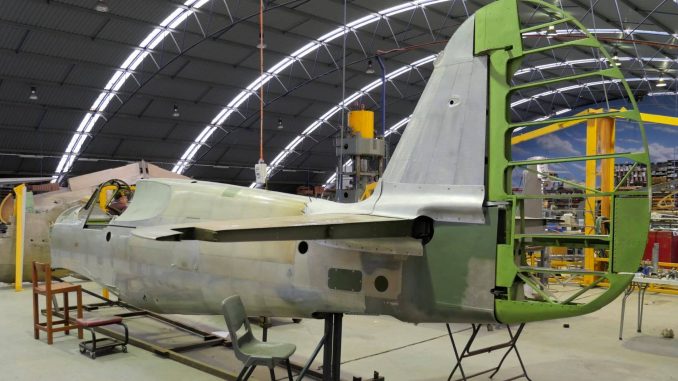
For those amongst us with an avid interest in vintage military aircraft, there can be few who haven’t at least secretly harbored a long-held dream to be more than just a bystander; to actively take part in the preservation of aviation history. This is, of course, much easier to accomplish if you have significant financial resources. But for those without personal fortunes, there are still many paths towards living the dream on our own terms – from the smallest donation of time or money to a worthy project or museum, all the way up to full-time employment in such an endeavor. For some of us, however, that wish extends further, and includes the idea of restoring our own aircraft… But surely this is a pipe-dream without the aid of a bulging bank account, right? Well – realistically – for most people it is…
But sometimes a singular determination, coupled with enormous personal effort, opportunity and a little luck over many, many years can yield the desired results. Keith Hopper is one such man living this dream. Piece-by-piece, this now-highly experienced Australian pilot has spent nearly forty years slowly acquiring parts and having them restored for his former Royal Australian Air Force Curtiss P-40N Kittyhawk A29-446. Hopper had the perspicacity and industry to recover the battered remains of this combat-veteran fighter plane (while he was still in high school!) from its resting place on the ominously-named Rattlesnake Island – a small spec of land off the coast of Townsville in Queensland, Australia. While the aircraft is still some way from flying again, Keith Hopper has made great strides towards reaching his goal, and we thought our readers would enjoy learning more about his story. We bring Keith’s words to you courtesy of our longtime antipodean correspondent Phil Buckley.
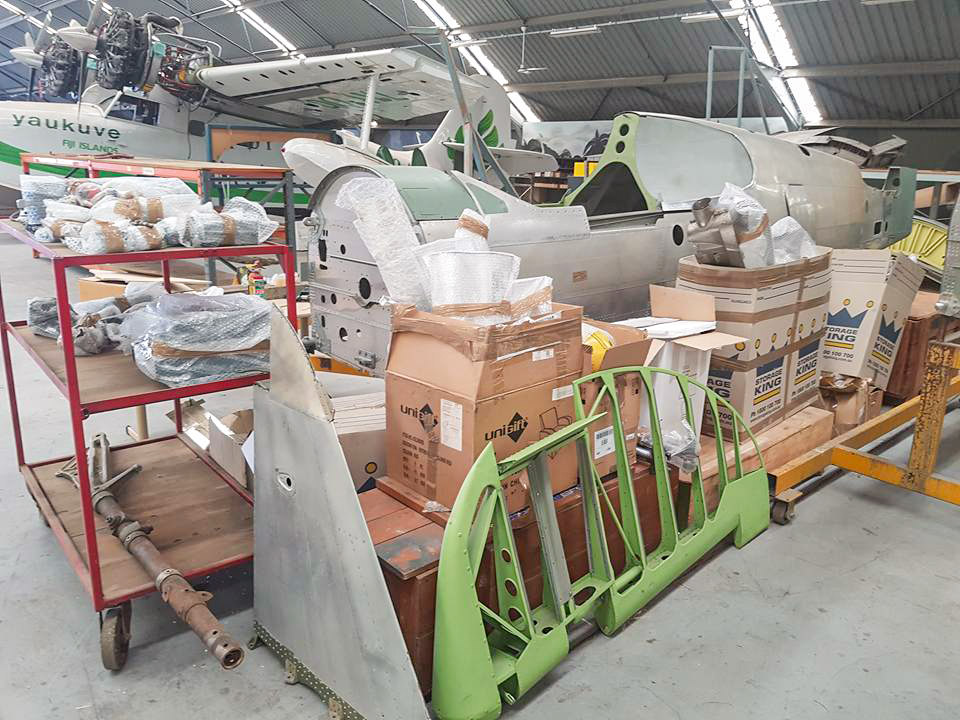
The Restoration of Curtiss P-40N-1-CU Kittyhawk A29-446
by Keith Hopper
Airframe History: P-40N-1-CU A29-446 (42-104728) was built at the Curtiss factory in Buffalo, New York and was shipped from the port of New York to Sydney, Australia. It was in the same consignment as A29-448, currently restored and flying in New Zealand. The consignment which A29-446 was in was assembled at No.2 Aircraft Depot in Richmond, New South Wales.
Many years ago, I received a phone call from an RAAF pilot veteran who had test flown all of the aircraft in the consignment at Richmond. No.78 squadron RAAF was at the time being formed at Camden in Sydney. A29-446 was not part of the original cadre of P-40s allocated to 78 squadron, however due to operational losses during training it was brought into the squadron (8th of September 1943) as a replacement aircraft (it replaced A29-409 which was damaged in a taxiing accident that August) and made the ferry flight north with the rest of the squadron’s P-40s; leaving Sydney on November 3rd, 1943 and traveling via Amberley, Townsville, Cooktown, Horn Island and Port Moresby.
A29-446 arrived at Kiriwina, a tiny island off the coast of Papua New Guinea, on November 13, 1943. During its time there, the fighter took part in fighter sweeps and ground-attack missions in support of operations to retake Finschhafen, Cape Gloucester, and Arawe. On the 31st of December 1943, whilst on a fighter sweep over West New Britain, Flt Sgt Chambers, flying A29-446, became lost in severe weather and landed at Woodlark Island. On the 12th of January 1944, the aircraft redeployed to Nadzab to join the ground echelon of 78 Squadron, which had arrived earlier. Operations from Nadzab were in support of the Shaggy ridge/Madang Campaign, and consisted primarily of ground attack missions. On the 16th of March A29-446 redeployed to Cape Gloucester with the rest of the squadron. At this time, space at Nadzab was at a premium and the USAAF wanted it in preparation for the invasion of Hollandia.
Operating from Cape Gloucester, RAAF 78 Squadron carried out armed reconnaissance and ground attack missions along the North Coast of New Britain. During April 1944, A29-446 (coded HU-S) was involved in a ground loop accident at Cape Gloucester, with Sqn Ldr Brydon the pilot in command. The damaged P-40 was allocated to No.11 RSU (Repair & Salvage Unit) in Nadzab for repair. A few months later, it rejoined 78 Squadron on the 8th of June. In it’s absence, another P-40 in the squadron (A29-405/42-104818) received ‘446’s original fuselage squadron letter “S“. On April 30th 1944, a disabled F-5B Lightning (42-67383) photo-reconnaissance aircraft landing at Tadji struck A29-405 causing it to be written off. On a side note, Charles Darby and Monty Armstrong recovered the fuselage of this P-40 from Tadji in [1974] and is currently under restoration in the USA (a photo of the abandoned fuselage appears in Charles Darby’s book; Pacific Aircraft Wrecks, and Where to Find Them). It’s interesting that there are two P-40s being restored in the world today that carried exactly the same paint scheme. I wonder if the owner of ‘405 will use the original markings?
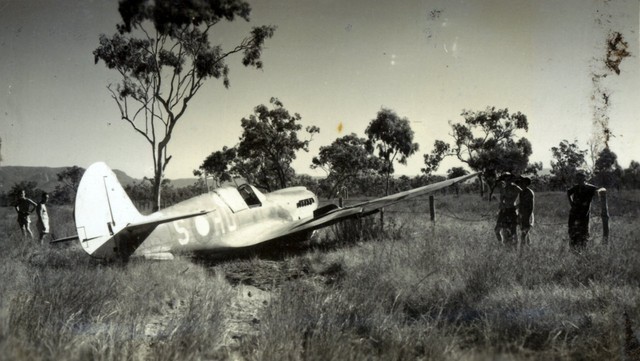
A29-446 returned to the squadron on June 8th, 1944 at Cyclops Field in Hollandia. On July 20th, she deployed with the rest of the Squadron to Kamiri Field on Noemfoor Island. But on November 6th, 1944, the aircraft went to 11 RSU at Noemfoor for an engine change. Following this maintenance work, the fighter transferred to 84 squadron at the Bohle field (Townsville, Queensland) on March 11th, 1945. Having served 17 months in theatre, the Kittyhawk was now taking part in the war effort away from the front lines, helping to convert RAAF fighter pilots onto the newly-received P-51 Mustang fighter. At this time, A29-446 served as a squadron hack to keep up pilot flying hours due to the limited availability of Mustangs for such purposes. The Kittyhawk stayed only briefly with No.84 Squadron, moving to 86 Squadron on April 1st, 1945. And there fate was to play a role in the aircraft’s future. On May 25th, 1945, the aircraft’s flying career came to an end following an accident at Bohle River. The pilot that crashed my P-40 that day, Keith Nelson, is still alive and remarkably health. He recently advised me that the accident was caused by the right landing gear folding on touch down, rather than an engine failure on take off as has been reported elsewhere. The aircraft was officially written off the books and then converted to components by 6 CRD (Central Recovery Depot).
The Recovery: My father was a master fisherman and he held the State Government Shark Meshing contract for Townsville region, as well as several prawn trawlers. On school holidays, my family would go camping on Herald island in the Halifax Bay RAAF gunnery range. It was on these holidays that I learnt of the existence of an aircraft wreck on the western tip of Rattlesnake Island. The Base Museum at RAAF Townsville claimed this wreck was A29-462 that force landed on the western tip of the island on July 2nd, 1945. This initially made sense, as A29-462 was the only P-40 to ever crash on Rattlesnake island. After visiting the wreck, I wrote to the Russell Offices in Canberra asking permission to acquire the wreckage. Wing Commander Stroud, in consultation with Robert Piper (RAAF Historical), gave permission for the wreckage to be recovered and wished me well with the endeavor. Circa 1982, whilst I was still in high school, my father and I, obtained RAAF Townsville SATCO’s (Senior Air Traffic Controller) approval to access the [bombing and gunnery] range, and removed the wreckage from Rattlesnake Island to Townsville using one of our fishing boats.

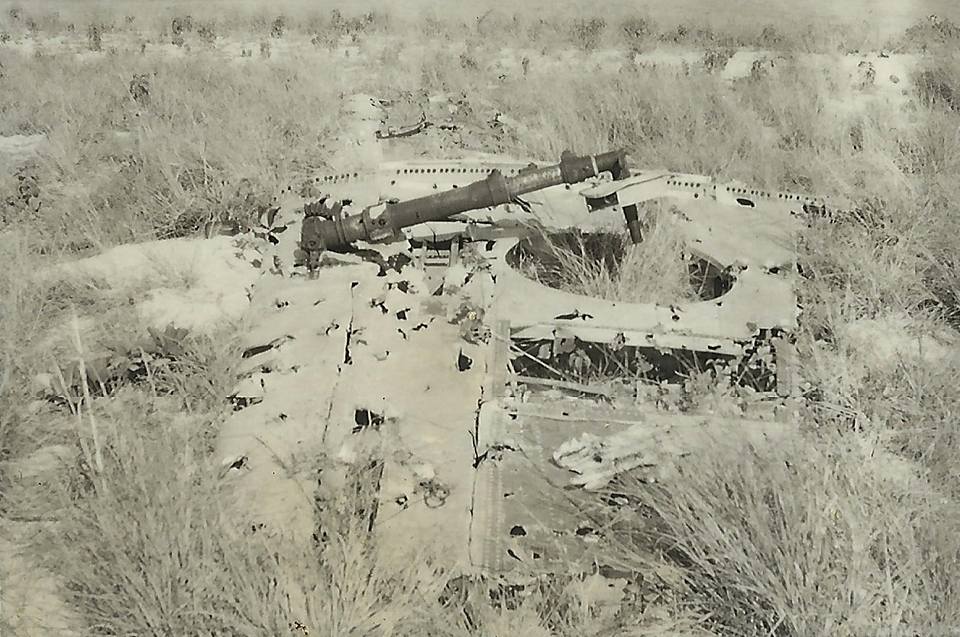
Restoration Progress: Since the recovery in the early 1980s, it has been an ongoing search for parts, information and skilled engineers. About 20 years into the project collecting more parts and information, I was contacted by a Mr. Clinton Kempnich of Brisbane. Mr. Kempnich had purchased a photo in a Brisbane antique store. The photo clearly showed A29-462 being recovered by members of 6CRD on the western tip of Rattlesnake island. The photo clearly showed A29-462 had a cut down rear fuselage, as was standard on the P-40N-5-CU. The fuselage that I had recovered did not have a cut down rear fuselage. It was possible from the systems fitted to the recovered fuselage to identify it as a P-40N-1-CU, in addition, the rear fuselage had a patched bullet hole indicating that it had seen action. It was then a case of eliminating all the P-40N-1-CUs that served with the RAAF before coming up with the only possible aircraft, A29-446.

Some years after this, Keith Nelson had a letter published in Flightpath magazine, relating his experiences as a RAAF P-40 pilot. I subsequently contacted him to enquire if he was the pilot who put A29-446 down alongside the Bohle airstrip. He was, and the rest is history [with the forlorn P-40 having been moved onto the range at nearby Snake Island]. These days, with more P-40s under restoration than ever before, there is far more support available for my P-40 Kittyhawk project than what I had back in the 1980s. Once I had all the fuselage frames and bulkheads either restored or fabricated, I handed the project over to the late Murray Griffiths of Precision Aerospace Productions in Wangaratta, Victoria to assemble the fuselage. Mark Rundle did most of the work.
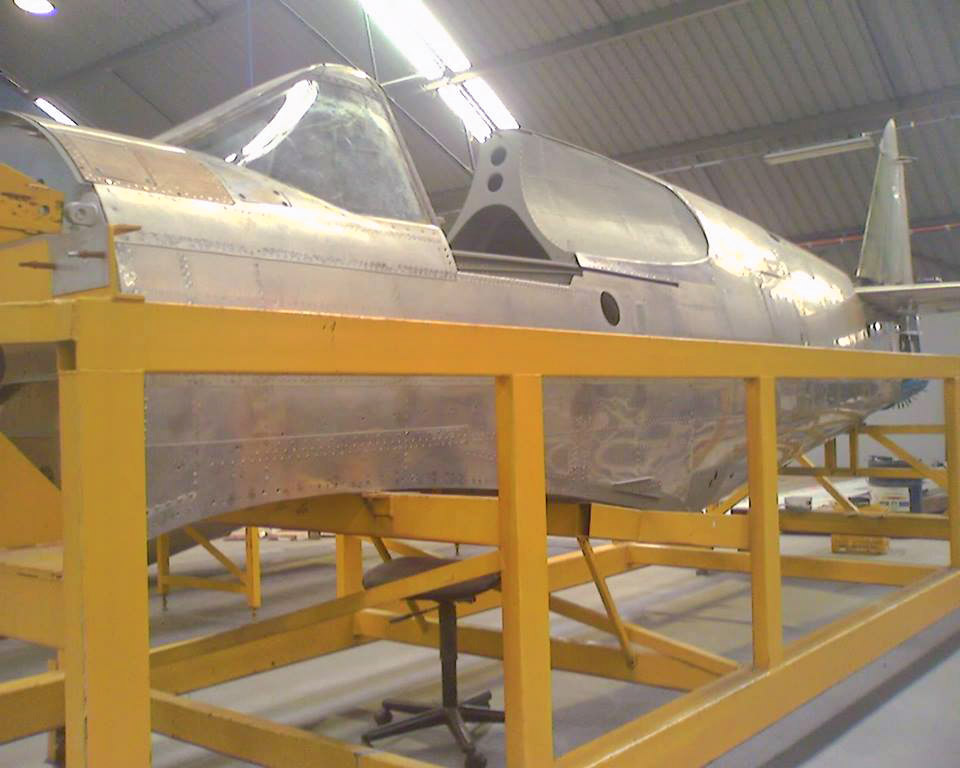
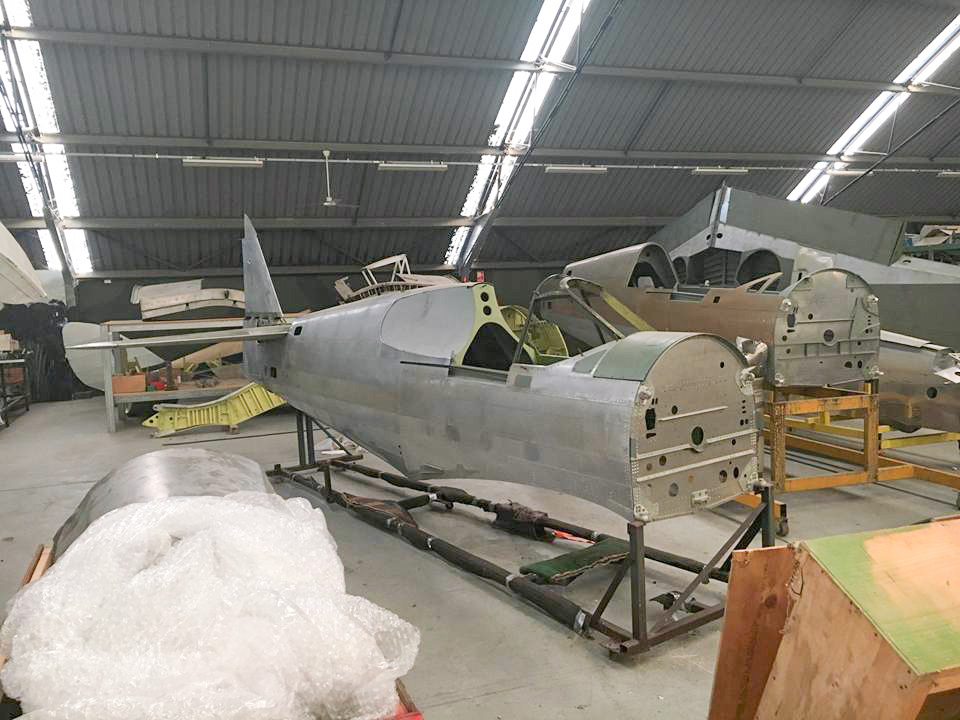
I then moved the project to New Zealand in 2006 to have Pioneer Aero Restorations fit out the fuselage, but my timing could not have been worse. The Global Financial Crisis struck and my ability to proceed with the project financially dried up. I then decided to bring the airframe back to Australia and place it into storage. Since then I have made some further progress, with original engine mounts sourced from Victoria, an Allison V-1710 engine from New Zealand, overhauled gear legs from the USA, and a cowling kit obtained from the USA. In 2016, the project was handed over to Doug Hamilton’s Precision Airmotive PTY of Wangaratta, where it is now making steady progress back to airworthiness.
Present Status: The tail assembly is just about complete, fitting out the fuselage will be next. Some work has already been done on the firewall. We want the fuselage complete before we move on to the wings. We pretty much have everything, except 30″ wheels and a Curtiss Electric propellor. The plan is to source new-build wheels from CAMS [Classic Aero Machining Services & Engineering] in New Zealand and use a re-profiled Hamilton Standard propellor [in place of the Curtiss Electric]. We have the original wings, but they are in very poor condition. Precision Airmotive will most likely build a complete new set.
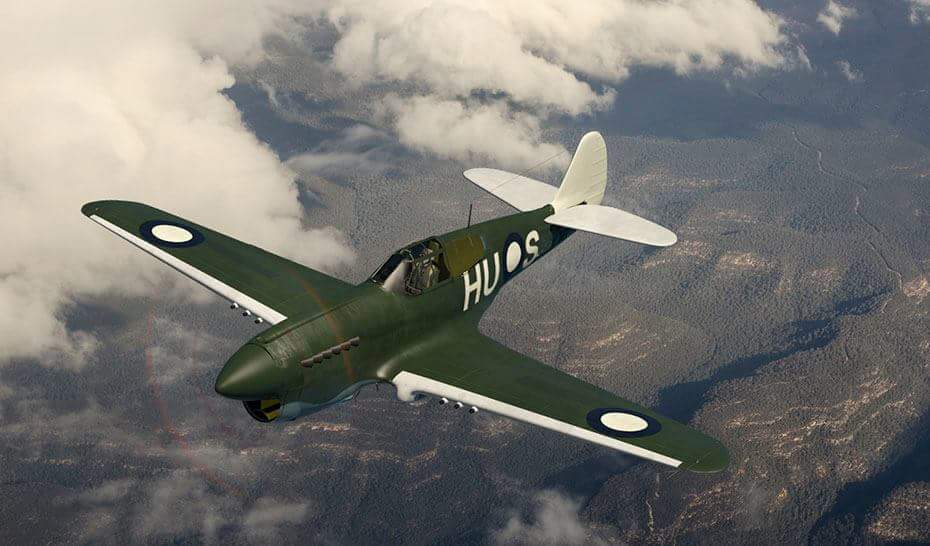
So that’s the state of the project so far. While it has been nearly four decades in the making, it is very clear that the resurrection of this significant, combat-veteran aircraft is well under way. It is a remarkable testament to what one person can accomplish in vintage aviation without the aid of major financial backing… Many thanks to Phil Buckley for bringing us this article, and of course to Keith Hopper for taking the time to describe his project and contribute images.


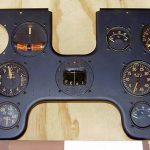
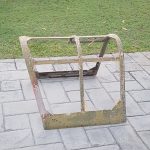
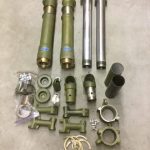
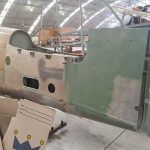
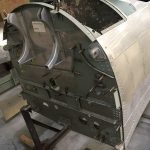
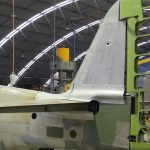
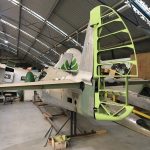

Be the first to comment
Graphic Design, Branding and Aviation Art